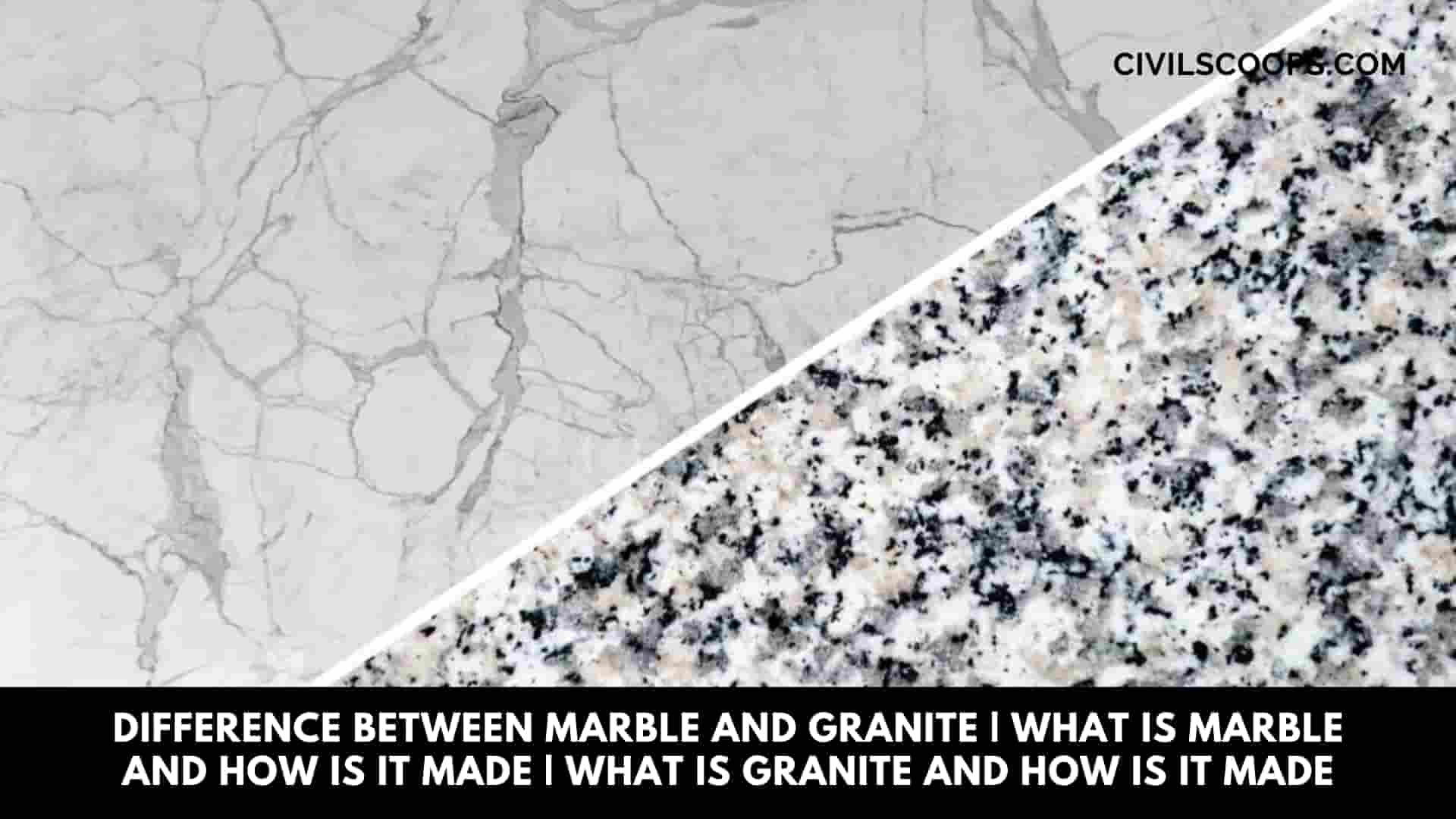
Table of Contents
Introduction of Marble and Granite
Someone busy planning the interior of their home, let me tell you research is very crucial, and one of the difficult choices the owners have is choosing between Marble and Granite.
Both Marble and Granite are natural materials and are often mistaken for each other. There can be drastic variations in colour and pattern.
In both cases, a display sample you see in-store may not be an accurate representation of your actual purchase. Let’s get on to discuss more about Marble and Granite.
Also Read: Stone Masonry vs Brick Masonry | What Is Brick Masonry | What Is Stone Masonry
What Is Marble And How Is It Made?
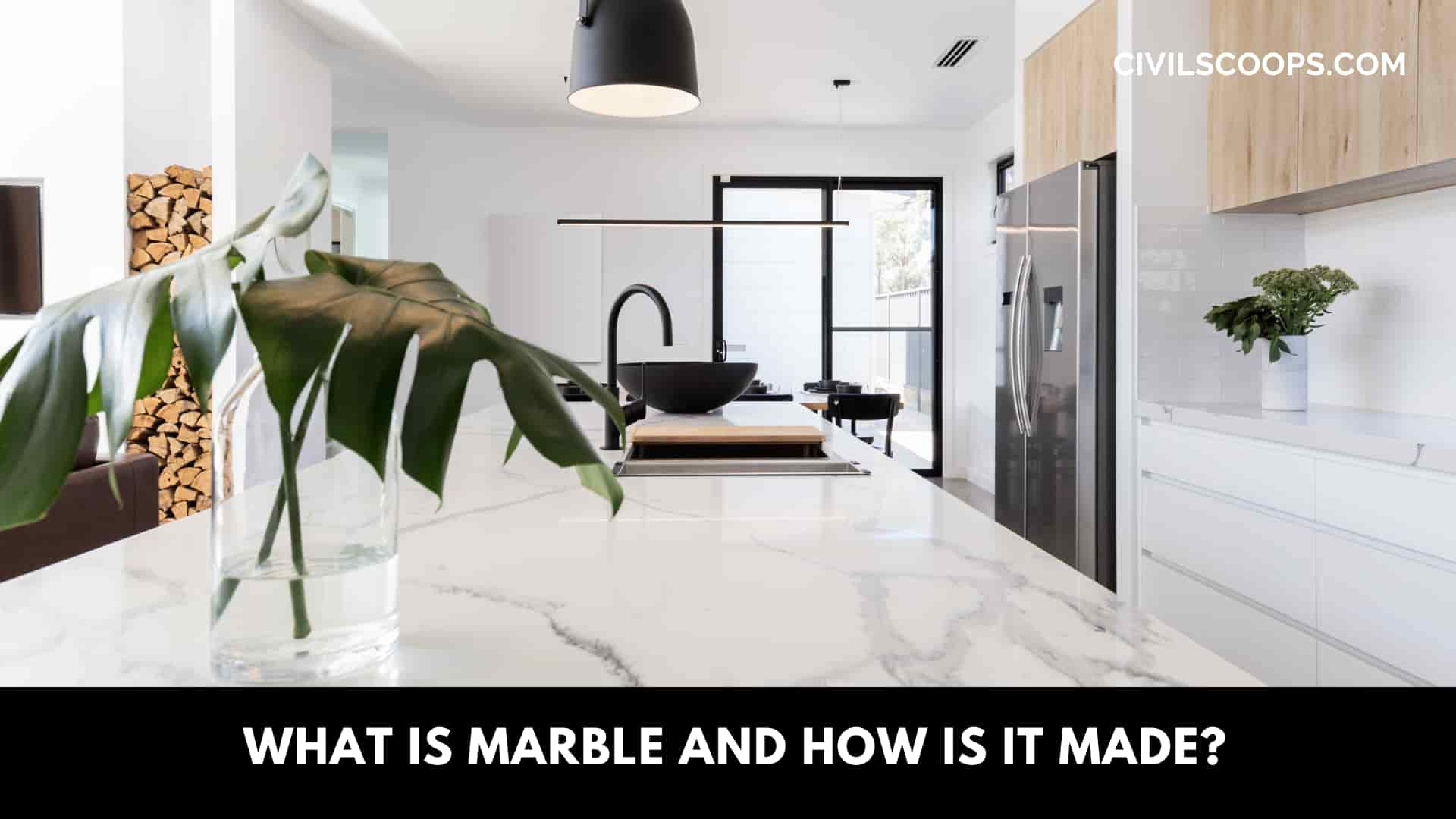
The word “Marble” is derived from the Ancient Greek mármaros, which means “crystalline rock, shining stone.” Marble is a granular metamorphic rock. It consists of a mass of interlocking grains of calcite or the mineral dolomite.
Marble is made as a result of limestone that is subject to extreme heat and pressure. This combination of heat and pressure recrystallizes the calcite in limestone and can also affect the texture and colour of marble.
Ex– Taj Mahal in India is built of Makrana a white marble that changes hue with the angle of the light. The chemical composition of marble: It Consists mostly of Calcium carbonate (CaCo3) with minor amounts of Silica, magnesium carbonate, Silica, Iron oxide, Aluminium oxide, etc.
What Is Granite And How Is It Made?
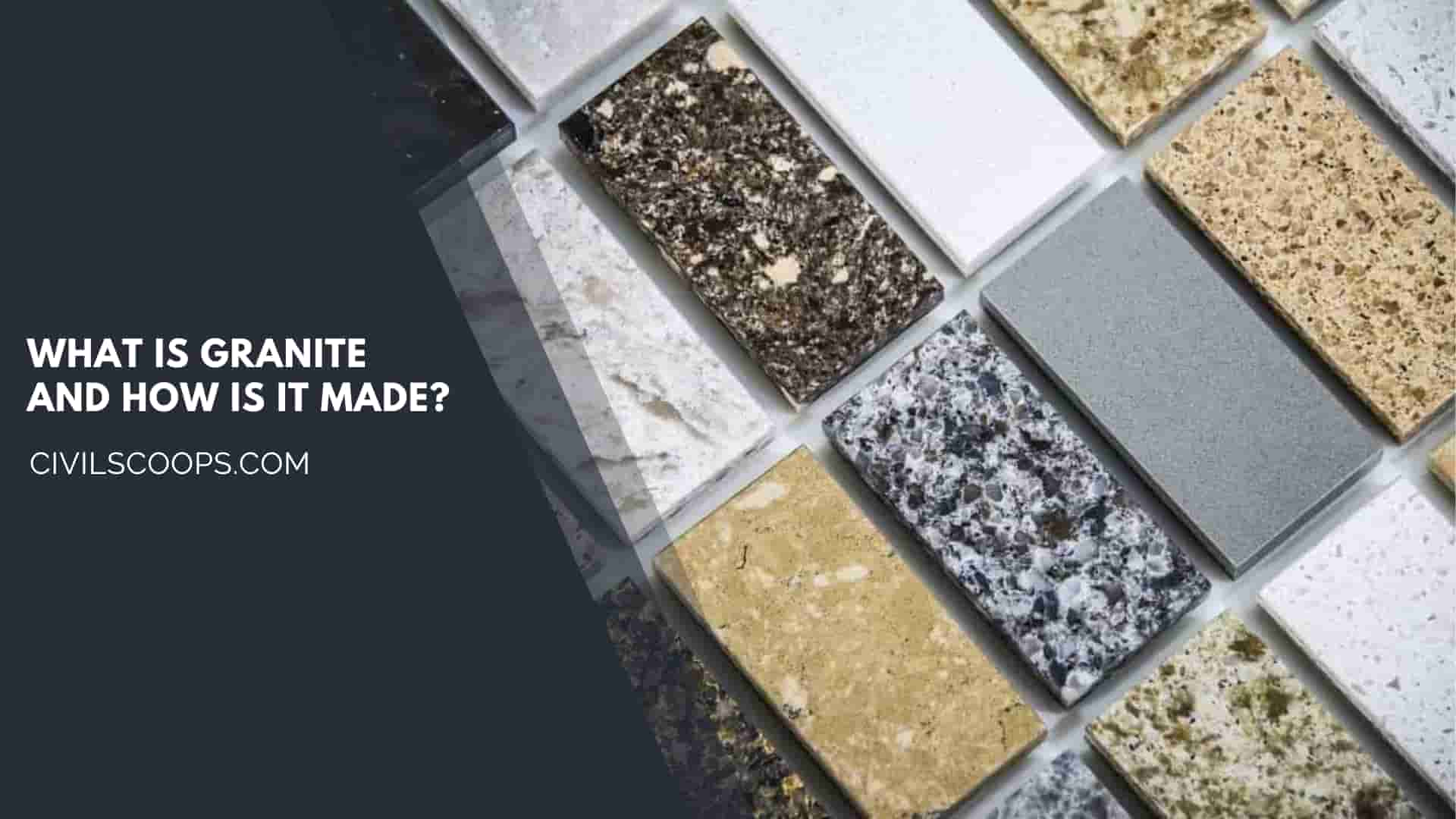
The word “Granite” appeared for the first time in the works of the English botanists, physician, and philosopher Caesalpinus in the 16th century.
Granite is a hard igneous stone and is the most common intrusive rock in Earth’s continental crust. It is familiar as a mottled pink, white, grey, and black ornamental stone. It is coarse to medium-grained.
Granite is made over millions of years by volcanic activity. Magma flows from volcanic activity and slowly cools over millions of years.
During the process, magma combines with various minerals, including hornblende, feldspar, mica, and quartz, to create its “crystal appearance“.
The elements are compressed by forces deep under the earth’s surface. Ex–Mt. Rushmore in South Dakota, USA, was craved from a mountain that was made of exposed granite.
The chemical composition of granite: It consists of the minerals quartz and feldspar, The most common accessory minerals are the black mica biotite and the black amphibole hornblende.
Now when you know the basic difference between marble vs granite, including their formation and composition. There are several factors that you must consider related to looks and physical elements of both. So Let’s get more specific about comparing the different attributes of marble and granite.
Also Read: What Is Dressing of Stone | Types of Dressing of Stone
Marble Vs Granite
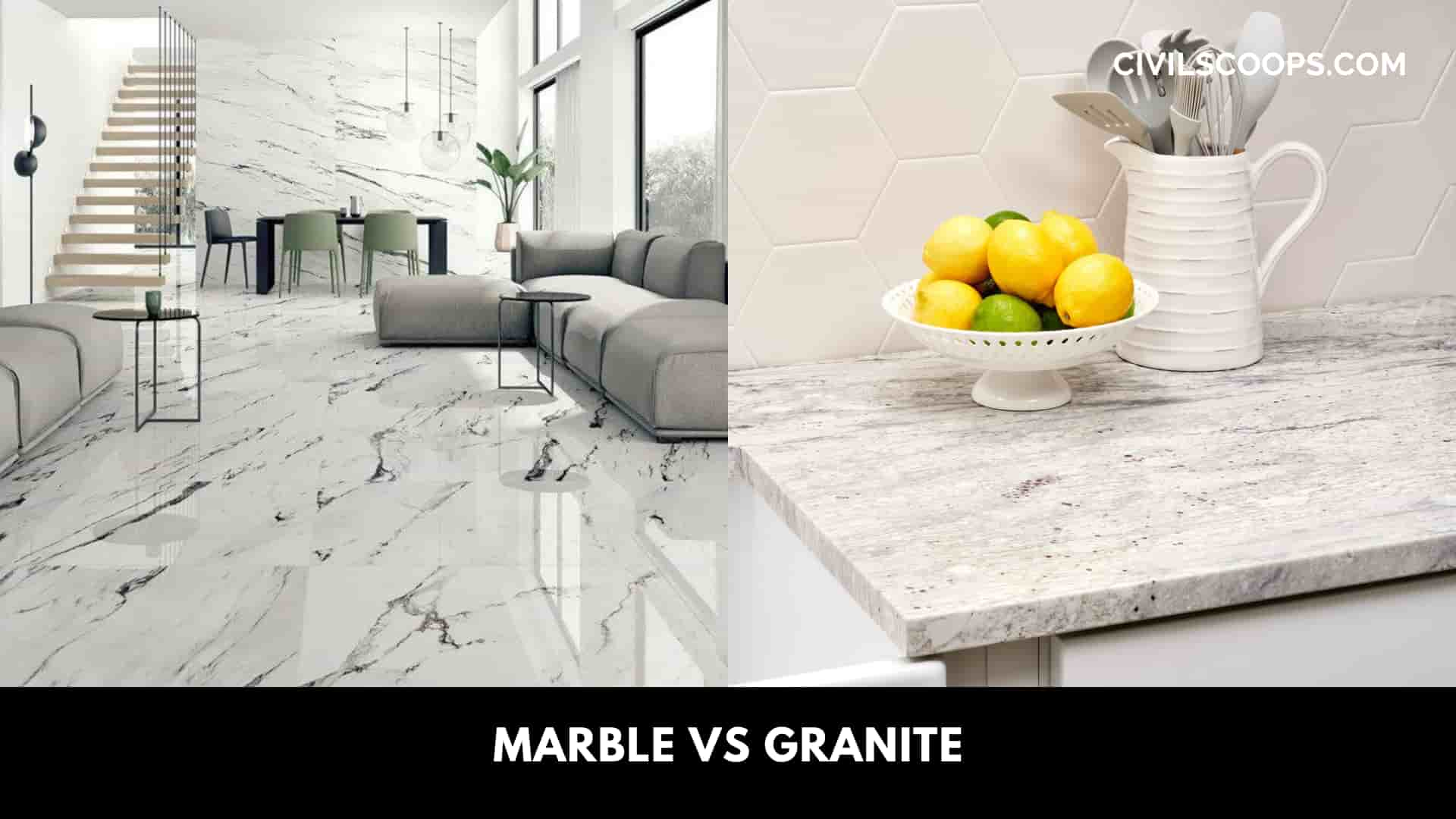
1. On the Basis of Appearance
Marble is typically a solid greyish-white or cream colour and has dark veins running through it, though there are other varieties that have a pale green or pink colour. The lines in marble are formed from mineral impurities, like silt and iron oxides.
The physical appearance of granite is very different from that of marble. Granite has a variety of speckled colours resulting from the melded stones within it namely, quartz, feldspar, biotite mica, and sometimes amphibole and comes in numerous shades and tones.
Granite is a stronger and harder stone than marble is, which lends it a shiny, glossy appearance compared to marble’s dull smoothness. However, with certain polishing sealants, modern marble can be made to look much shinier.
2. On the Basis of Hardness and Durability
Granite is harder than marble, so it is more resistant to cracks and scratches. Both are heat resistant. Both marble and granite countertops are quite durable, Granite and marble are porous, so without a seal, liquids will penetrate and stain.
When the seal fades and is not replaced, these stones can be easily marred by oil, wine, juice, and anything acidic. Marble is especially vulnerable to acidic foods and liquids, so be very careful to keep them off the marble or to clean up immediately after contact.
Porosity matters, especially when talking about kitchen countertops because it will decide whether a material can withstand the elements in the kitchen. And if the material was to be chosen on the basis of Porosity, then it would surely be Marble. It is compact and sturdy, also proving its Durability.
3. On the Basis of Cost
When it comes to cost, the cost varies according to colour and appearance. Marble is slightly more expensive than granite. The Approximate cost for both Granite and Marble ranges between 50Rs to 400Rs Per square feet. But high-end marble tends to be more expensive than equivalent high-end granite.
The Price actually depends on the quality of the stone, the complexity of the job, also the style of the cutting of tiles, and the installation is not a do it yourself project, but it requires a professional for the installation.
4. On the Basis of Maintenance
Because marble is porous, the material can be damaged by spilling any acidic products, also when cleaning vinegar or any bleach products are not to be used. To clean marble, use products specially intended to clean the material.
Granite is non-porous, although this doesn’t mean that granite is indestructible but requires you to be less cautious as compared to marble. You can clean the surface by using any warm soapy water, which will also keep its shine. Also, Granite is scratch-resistant, which makes it easy to care while marble requires extra care.
Now when you know about the different attributes of Marble and Granite, you need to know about the applications of both
Where Are Apply Granite?
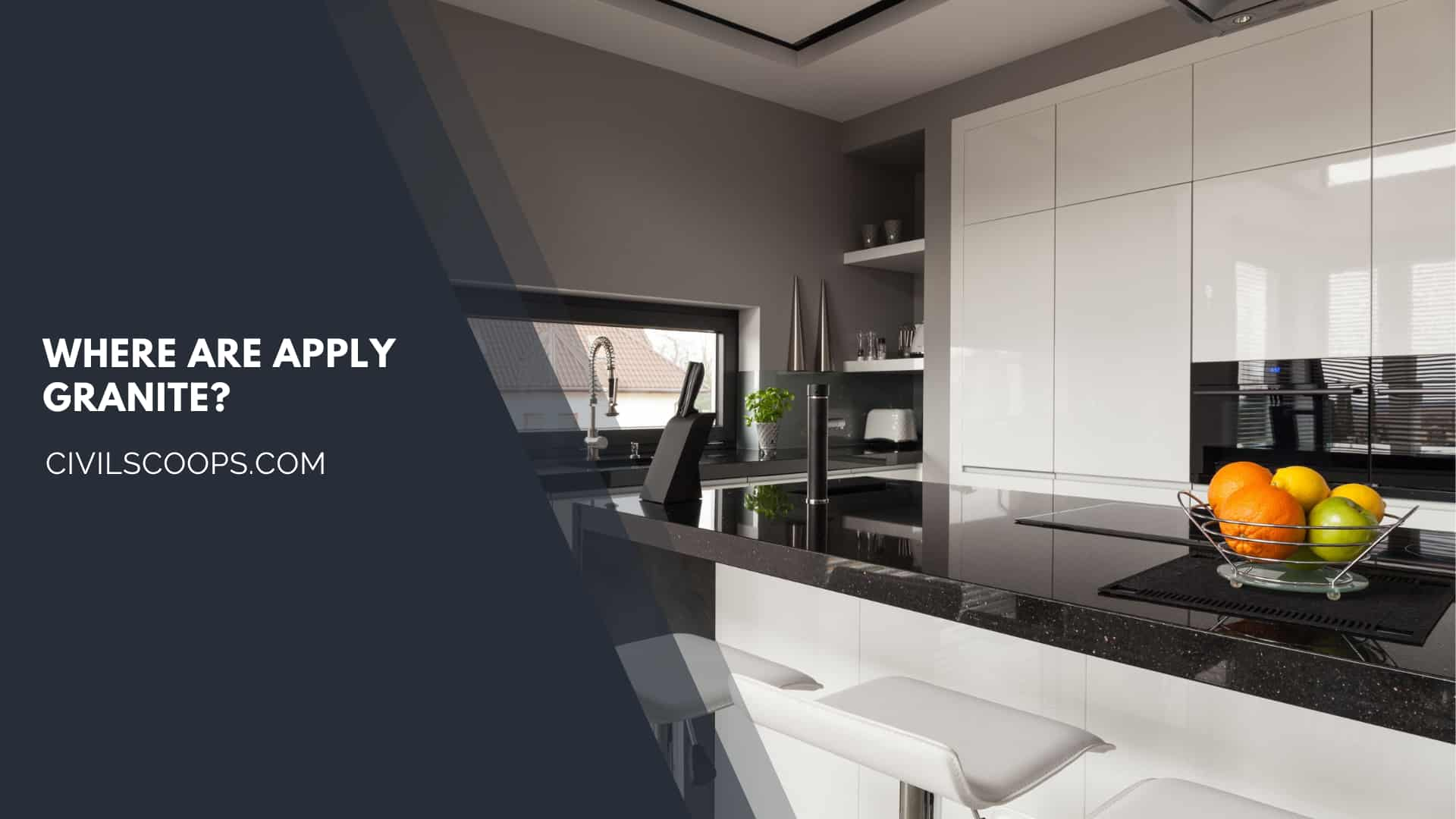
Granite’s durable nature makes it suitable for use in kitchen countertops and floors, while marble is appropriate with places with less usage like in bathrooms as spills there won’t make any effect to the material it is also used in cosmetics, paint for its optical properties.
Where Are Apply Marble?
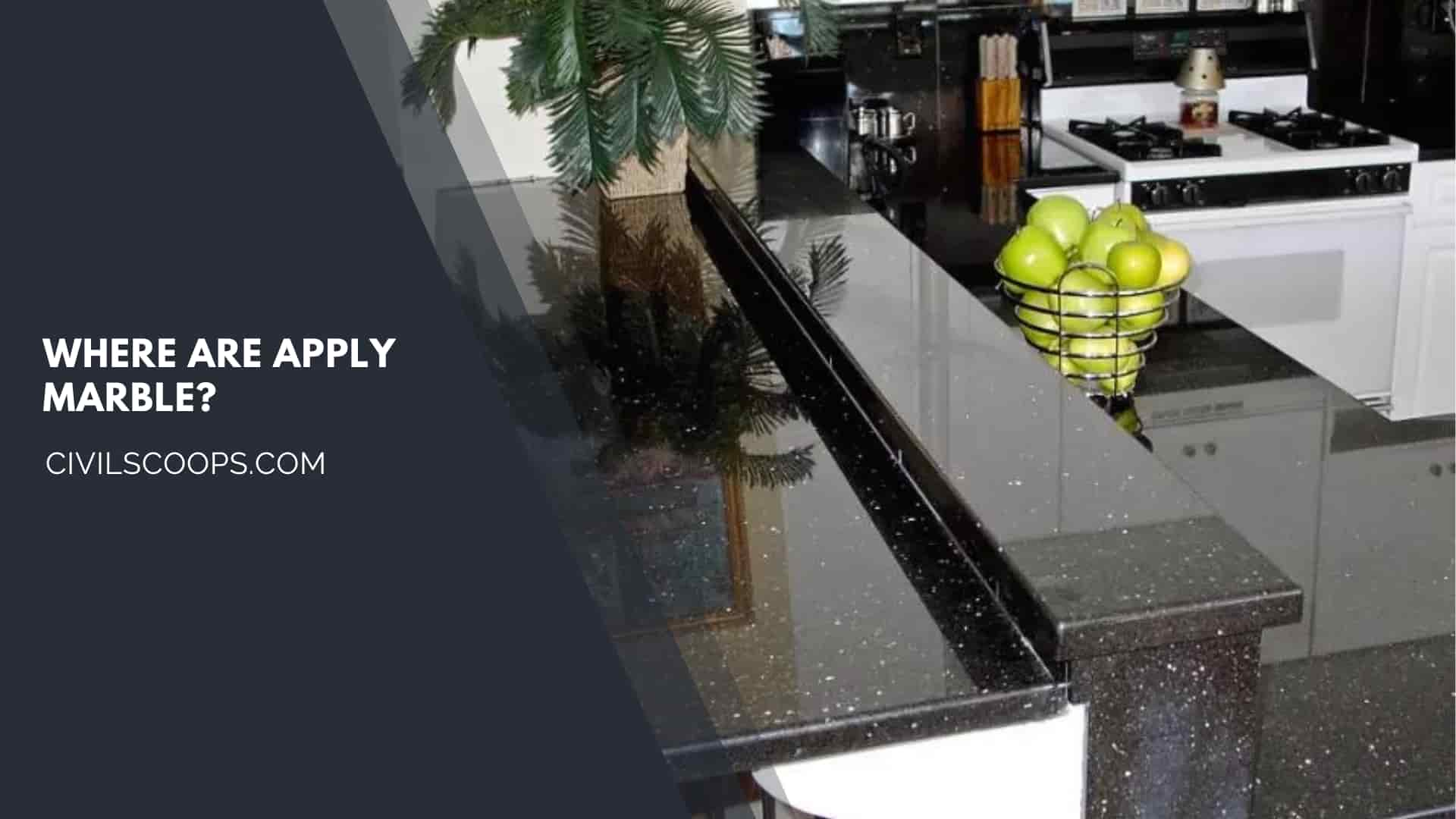
Marble is commonly used for sculpture and as a building material, and Granite is used in buildings, bridges, or any other exterior project.
Also Read: First Angle Projection & Third Angle Projection Symbol (Orthographic Projection)
Conclusion of Granite Vs Marble
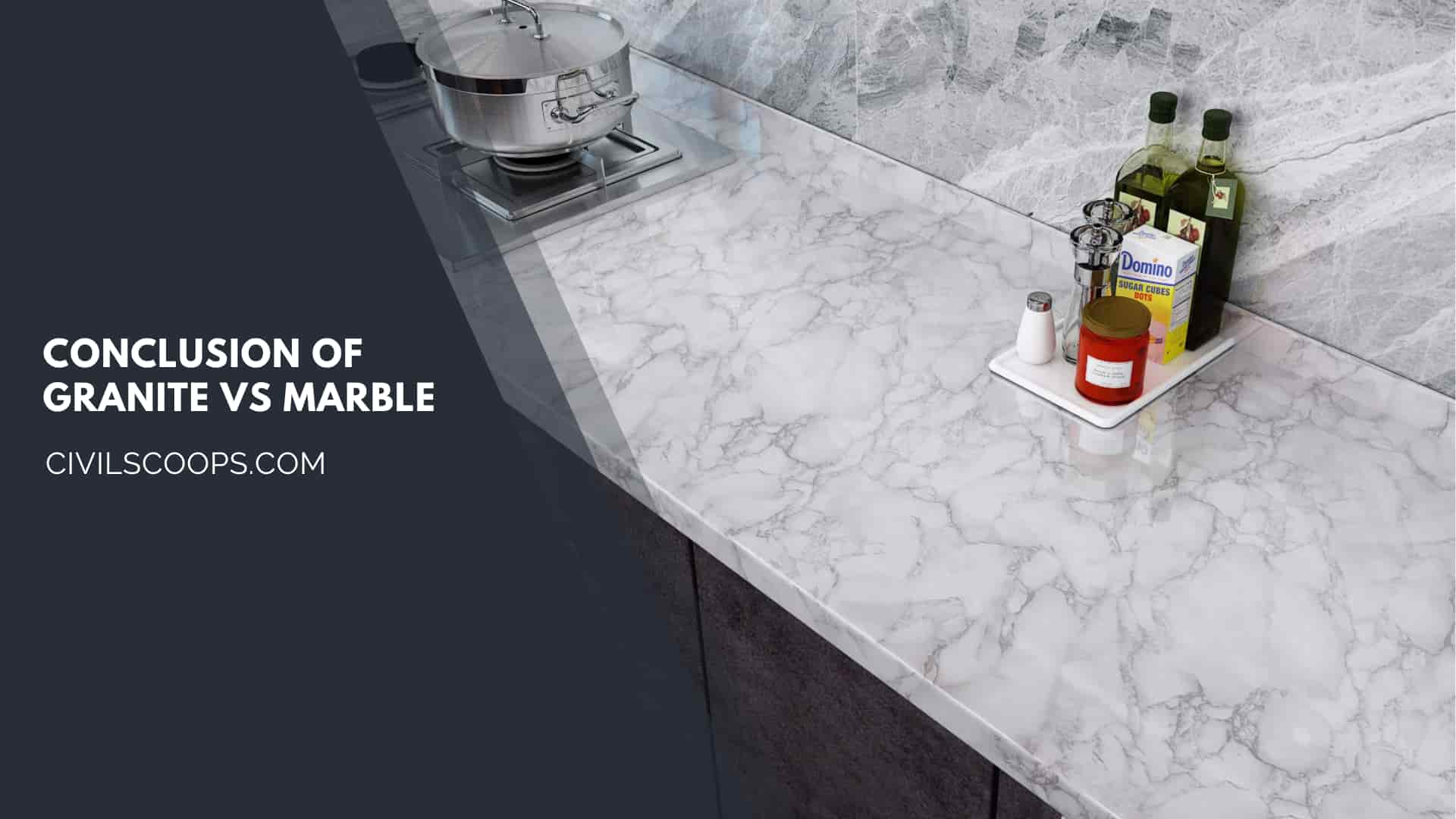
So now you know both of these come with pros and cons, from durability to purely aesthetic feel to financial implication it all depends on your need and usage. After reading about the various attributes of both and the comparison, you surely have a clear picture of the differences between Marble and Granite.
Difference Between Marble and Granite
Granite is a stronger and harder stone than marble is, which lends it a shiny, glossy appearance compared to marble’s dull smoothness. However, with certain polishing sealants, modern marble can be made to look much glossier than it did in the past.
Which Is More Expensive Granite or Marble?
Both granite and marble are considered higher cost countertop options. Granite is typically less expensive, running approximately three-fifths the price of the luxurious stone. On average, costs per square foot for granite range from $40 to $100, while costs per square foot for marble range from $50 to $150.
How Is Marble Made?
Marble forms when sedimentary limestone is heated and squeezed by natural rock-forming processes so that the grains recrystallize. If you look closely at a limestone, you can usually see fossil fragments (for example, bits of shell) held together by a calcite matrix.
Is Marble Countertops Better Than Granite?
When comparing granite vs. marble, both natural stone countertops offer beauty, but granite does take the lead regarding additional durability and easier care.
How Is Granite Polished?
In order to reach the desired finishing, granite slabs are run through a series of progressively finer diamond polishing pads in a slab polishing machine. With each new layer of polishing, the finer the pads, the glossier the surface finish.
What Type of Rock Is Granite?
Granite is an igneous rock composed of mostly two minerals: quartz and feldspar. It is an intrusive rock, meaning that it crystallized from magma that cooled far below the earth’s surface.
What Is Granite Made Up Of?
Granite is a coarse-grained, crystalline rock, made up mostly of three minerals called quartz (grey, glassy looking), feldspar (usually white or pinkish, blocky shapes), and shiny black or pale mica.
What Does Granite Consist Of?
The chemical composition of granite is typically 70-77% silica, 11-13% alumina, 3-5% potassium oxide, 3-5% soda, 1% lime, 2-3% total iron, and less than 1% magnesia and titania. Volcanic rock of equivalent chemical composition and mineralogy is called rhyolite.
What Is the Hardest Granite?
On the Mohs scale, granite is rated between 6-7 with black granite being the hardest granite.
How Is Granite Used?
Rough-cut and polished granite is used in buildings, bridges, paving, monuments, and many other exterior projects. Indoors, polished granite slabs and tiles are used in countertops, tile floors, stair treads, and many other practical and decorative features.
How Is Granite Different from Marble?
The biggest difference between granite and marble is their porosity. Basically, marble is softer and more porous than granite with few exceptions like marble from Danby, VT. Marble like Imperial Danby from Vermont is one of those types which are very solid.
How Is Granite Cut?
Diamond wire and gang saws are used to cut through the rough blocks of granite in order to produce slabs of stone that are uniform in size. Diamond wires and diamond saws are most often used for cutting granite, as diamonds and granite are the closest materials on earth in regard to durability.
How Hard Is Marble?
Marble rates a 3 on the Mohs hardness scale, and is considered a “soft” stone – hence its common use in sculpture. It’s also a porous stone, so it’s more prone to staining and damage due to harsh cleaning products.
Like this post? Share it with your friends!
Suggested Read –
- What Is Paint Finishes for Walls | Types of Paint Finishes | Types of Paint Finishing
- What Is Superstructures | Difference Between Load-Bearing and Framed Structures
- 10 Principles of Architecture | What Is Architecture | Why Need Design Principles in Architecture
- What Is Bond Breaker | Purpose of Providing Bond Breaker | What Is Concrete Bond Breaker | What is Bond Breaker Tape
- Concrete Batching | Concrete Batching Plant | Types of Batching of Concrete | Various Factors Affecting the Choice of Batching System